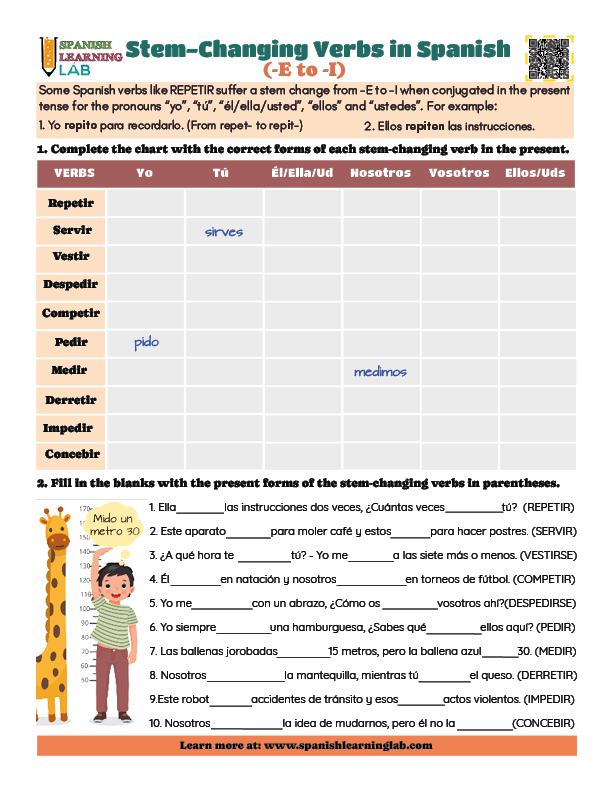¡Hola! Thanks for using our resources. This time, we are sharing another great PDF worksheet to practice the grammar rules to conjugate stem-changing verbs in Spanish in the present tense, particularly those whose stem (la raíz del verbo) will change from -E to -I. Let’s start…
Directions:
Students could work individually or in pairs on these exercises. They can also solve it online through the quizzes in this page.
Some Spanish verbs suffer a change in their stem when conjugated in the present tense for a group of subject pronouns (yo, tú, él, ustedes, ellos). This happens to common verbs with an -E in their stem, such as “Pedir” (to ask for) and “Repetir” (to repeat). For these special verbs, we will replace the -E in the stem (second on in “repetir”) for the vowel -I, just like this:
- Yo repito el poema para recordarlo. (I repeat the poem to remember it – Here, the verb repetir has an -e in the stem, so instead of saying “yo repeto”, we will say “repito”)
- Ellos repiten las instrucciones. (They repeat the instructions. – Here, the verb repetir also has an -e in the stem, so we will not say “ellos repeten”, but “repiten”)
To solve the first exercise, students must complete the chart on the worksheet containing a list of ten common stem-changing in Spanish -E to -I and conjugate all of them in the present tense. Students could make use of a conjugation tool to double-check the right form of these verbs. To solve the second exercise, students must fill in the blanks using the correct forms of the stem-changing verbs in parentheses following the pattern for these verbs.
Worksheet information:
Level: Pre-Intermediate
Skill: Grammar
Related lessons:
- How to Make Basic Sentences in Spanish
- Making Sentences with Stem-Changing Verbs in Spanish
- Regular Verbs in Spanish: Conjugation, List and Sentences
- Common Spanish Irregular Verbs: List and Sentences

Solve it online!
Exercise No. 1
Complete the chart with the correct conjugations for each stem-changing verb E to IE in Spanish.
Exercise No. 2
Fill in the blanks with the right forms of the verbs in parentheses.
